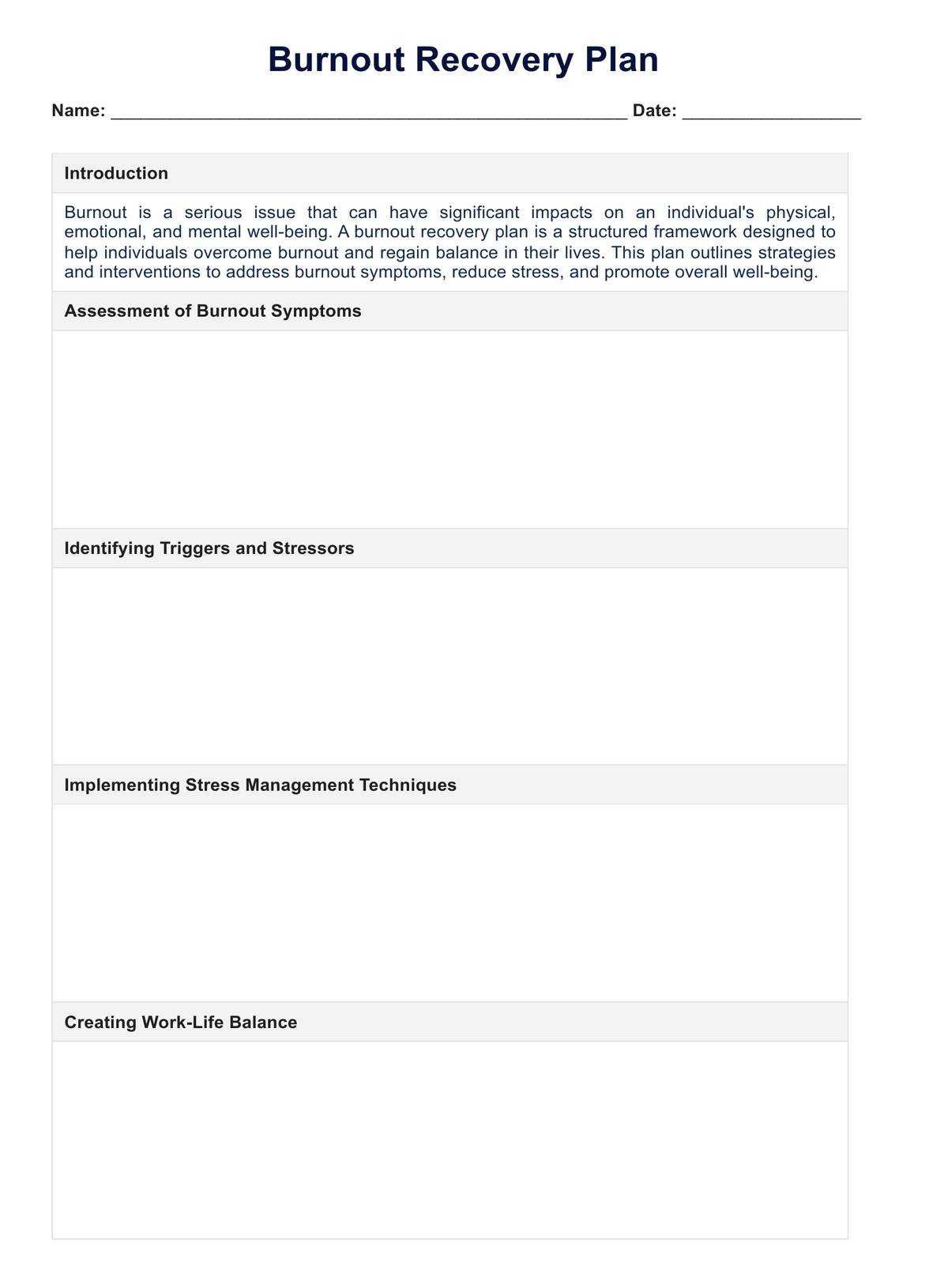Recovery time varies depending on individual circumstances but may range from weeks to months. Consistently implementing self-care strategies and seeking professional support can expedite the recovery process.

Burnout Recovery Plan
Get your free PDF of a burnout recovery plan from Carepatron to help you overcome burnout and regain work-life balance. Explore practical recovery strategies.
Burnout Recovery Plan Template
Commonly asked questions
Burnout recovery typically involves phases of recognition, intervention, and maintenance. Recognizing symptoms, implementing coping strategies, and maintaining healthy habits are key components of each phase.
The best way to recover from burnout involves a holistic approach addressing physical, emotional, and psychological aspects. Prioritizing self-care, seeking support, and making lifestyle adjustments are effective strategies.
EHR and practice management software
Get started for free
*No credit card required
Free
$0/usd
Unlimited clients
Telehealth
1GB of storage
Client portal text
Automated billing and online payments











